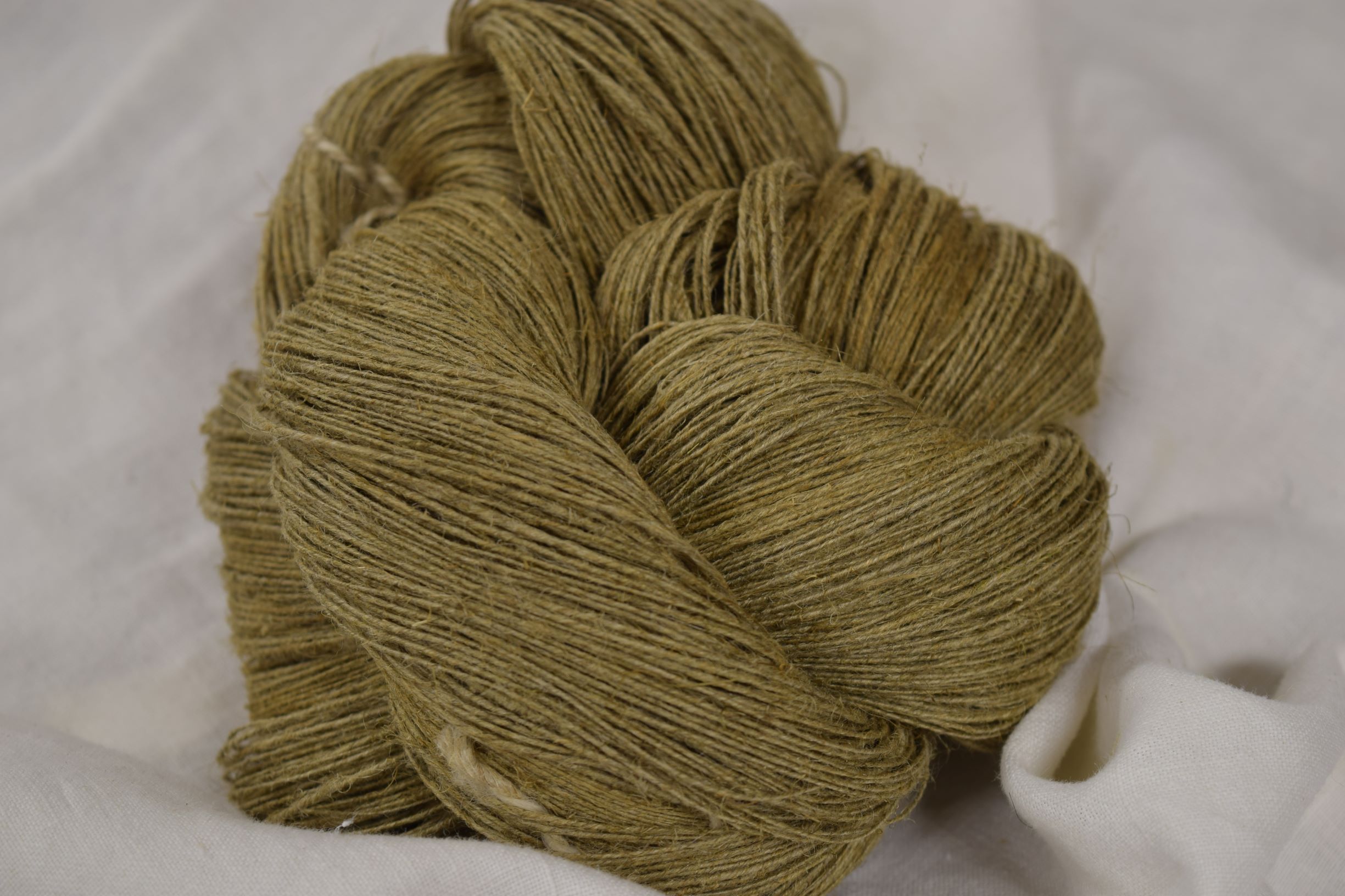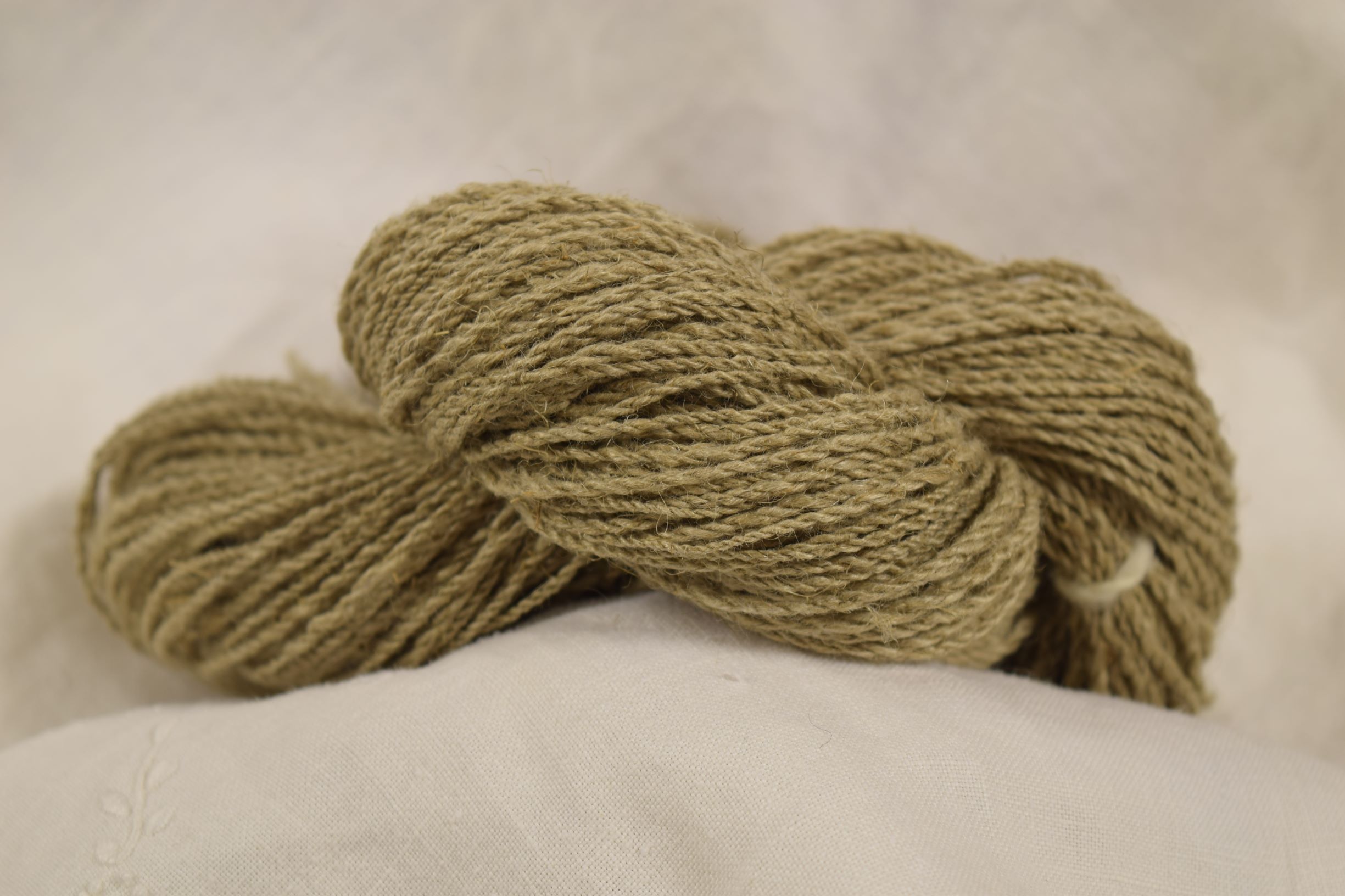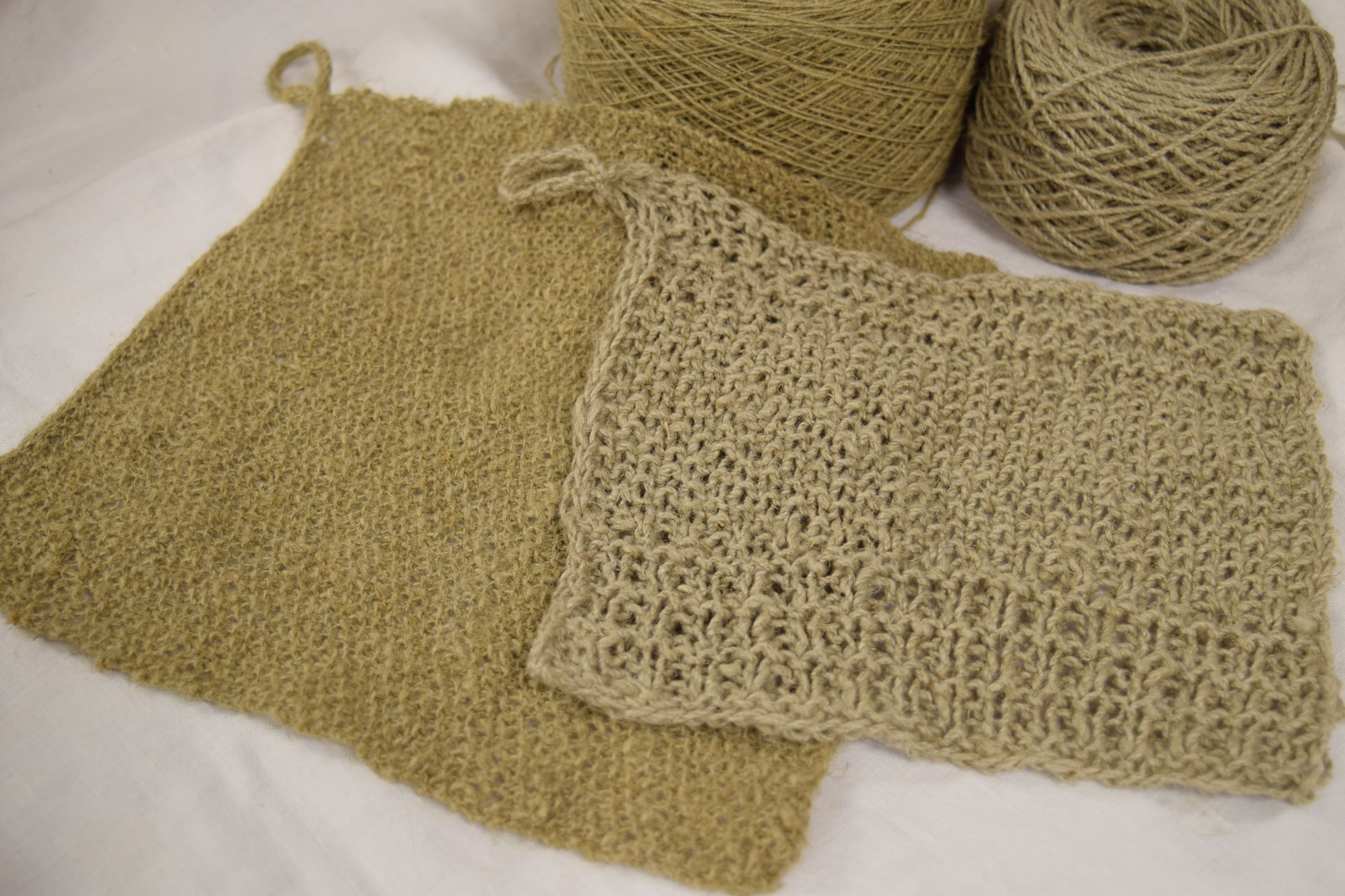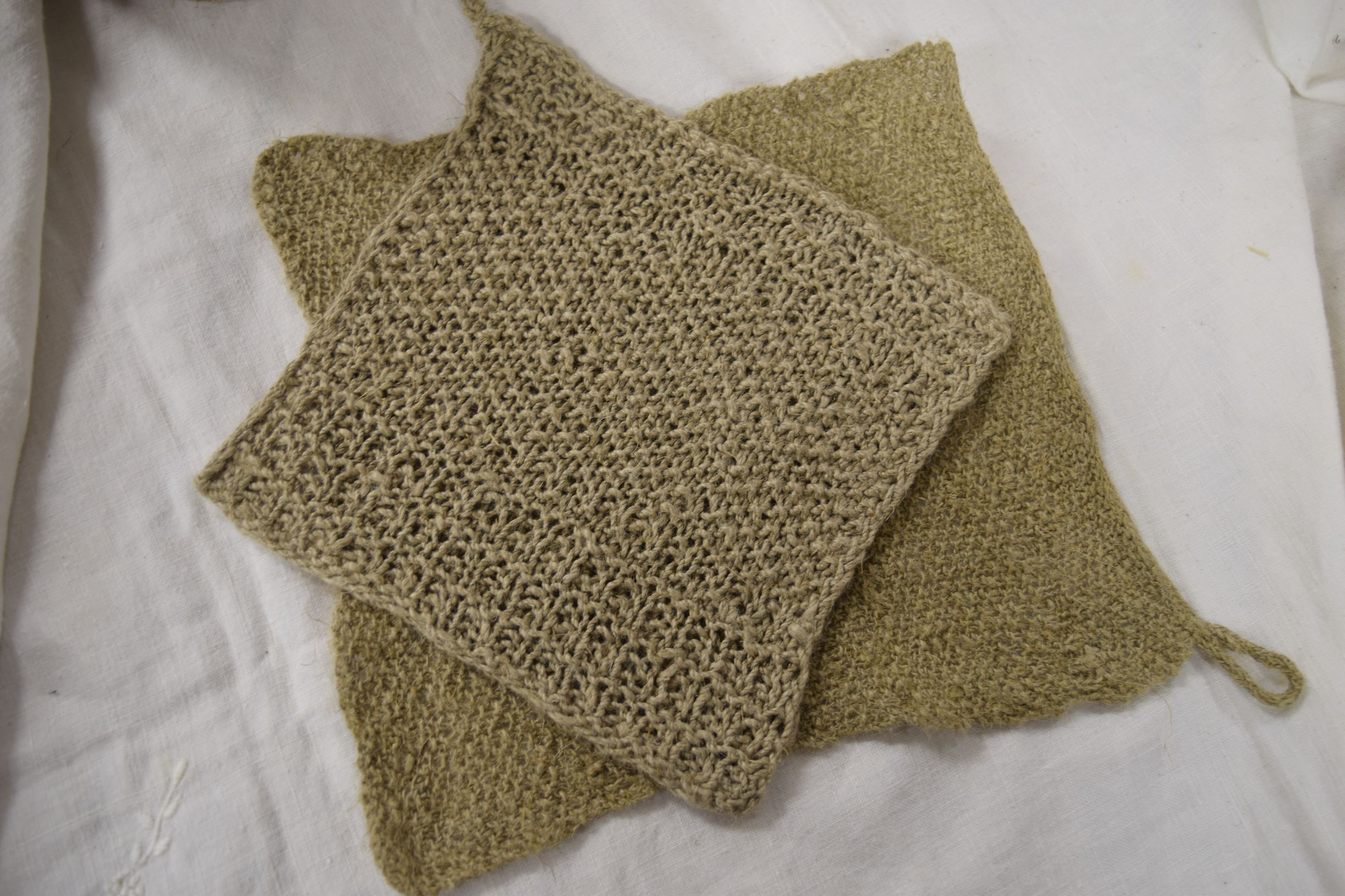07 Apr Knitting With Linen
Our linen is gown, processed, and spun by us, each batch is unique. Our yarns and spun with flax tow which is the byproduct of hackling flax for long line. These shorter fibers are gathered up and go through a process of tumbling, picking, separating and carding to remove as much shive as we can.
It’s a careful balance to clean the tow and to be gentle enough not to break these sorter fibers even more. Once through our carder and into roving we can spin it on our spinning frame. With each batch I try to make the thinnest single I can without sacrificing strength.
Spun long line linen is a very strong yarn. The long fibers allow it to be very thin and retain a huge amount of strength. With the tow it is not nearly as strong, and even less so before it has been wetted. Flax unlike wool gets stronger when it is wet. It has pectin’s in it that allows the fibers to cling to each other when wet. Our linen tow singles are not as strong as our 2 ply yarns.
When you knit with linen for the first time there are some adjustments that should be made from wool knitting.
- Gauge
Linen is measured by the Lea system which is shown as x/y
For a 4/2 Linen yarn the 4 would be the gauge of the single, with the higher the number meaning the thinner the single and the 2 meaning two singles together.
A WPI measurement can give you a good starting point for needle size and a gauge swatch is recommended.
The 2 ply yarn is 5/2 and was knit with 4mm needles
The single is a 4/1 and was knit with 2.75mm needles
- Tension and slip
Unlike wool linen does not stretch. When knitting I find that it is best to have more tension on your yarn and stitches then you would normally with a stretchy yarn. This is where your gauge swatch will come in handy and let you practice your tension to get your desired look. If you are following a pattern from another fiber try your gauge swatch with needles a couple sizes smaller.
Unwind your linen from the outside of the ball. Linen clings to itself and is more likely to get bunched or tangled from a center pull.
When dry it can feel very slippery on your needles but can grip on itself as you knit. When it is wet or damp it will cling to everything, especially your needles. Things like humidity or if your hands are not completely dry will affect it to different degrees.
- Washing and Blocking
Once finished wash well. We scour our linen after it is spun, but it is not unusual for some residue to come out during the next few washes.
The more you wash is the softer it will become, and don’t be afraid to pick out any lingering bits of shive you might find along the way.
Linen doesn’t need to be blocked the same way you would a wool item. For these dishcloths, after washing I laid them down on the table to dry. They cling pretty well to things when, holding their shape without pinning.
Happy Knitting and Enjoy!
Knitting Patterns used : 1. The willow dishcloth by kneedles and life. 2. Dishcloths from Schachenmayr




